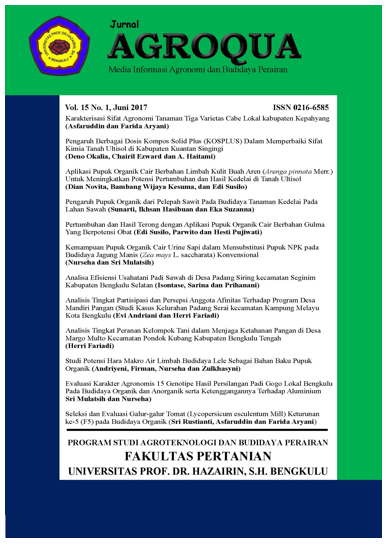PENGGUNAAN INDIKATOR FISIOLOGIS UNTUK MENENTUKAN TINGKAT CEKAMAN SALINITAS PADA TANAMAN PADI (Oryza sativa L.)
DOI:
https://doi.org/10.32663/ja.v20i1.2424Keywords:
cell membrane, Heat Shock Protein, proline, rice, salinityAbstract
Rice is the main staple food for most of Indonesia's population and its need continues to increase along with the increase of population. Areal for rice production in Indonesia should be carried out on marginal land, including on saline land. An agricultural land is classified as saline land if it has a dissolved salt content condition in excessive amount that negatively affect plant growth. This paper aims to evaluate several physiological indicators of rice plants undersalinity stress by measuring the stability of cell membranes, proline compounds, and heat shock proteins. The use of these indicators can be used on several plants under stress conditions, including rice plants that experience salinity stress. The level of cell damage and production of proline compounds and production of heat shock protein were used as a measure of plant tolerance to salinity stresses. Salinity stress induces cell membrane injury that causes metabolic dysfunction, increases proline accumulation, and responds to plant proteins. Measurement of cell membrane stability, proline content and heat shock protein content in rice plants under salinity stress can be used as a reference for detecting adaptation of rice plants in saline land.
References
Downloads
Published
Issue
Section
License
Authors who publish with this journal agree to the following terms:
- Authors grant the journal right of first publication with the work simultaneously licensed under a Creative Commons Attribution 4.0 Internasional (CC BY 4.0) Licence that allows others to use and share the work with an acknowledgment of the work's authorship and initial publication in this journal.
- The author(s) still hold the copyright of his/her/their work and retain publishing rights without restrictions such as (but not limited to) patent right, lecture, book and reproduce the article for own purposes.
















